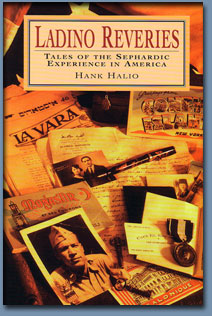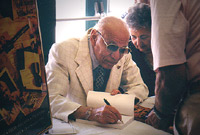Ladino Reveries by Hank Halio Published by the FASSAC
 |
An introduction by by Hank Halio The first column of 'Ladino Reveries' appeared nationally in the December 1986 issue of the Sephardic Home News. Mark Alhadeff, then the assistant editor of the Sephardic Home News, asked for permission to reprint an article of mine which he had read in the newsletter of the Sephardic Social Club of Florida, Inc. Permission was gladly granted, and the rest, as they say, is history. Little did I know then that EN MI VIEJES (in my old age) I would be making a new career for myself. Over the years I have received many compliments, and many of the readers have shared their experiences and anecdotes with me. I thank all of them for their generosity. Some of you have asked if a collection of columns would ever be available electronically. The answer to that is, HERE IT IS! In these columns I hope to share with you my appreciation of the beauty and wisdom of the Ladino language, including personal experiences and those of my friends and relatives. It is not an attempt to give an in-depth history of the Spanish-Jewish dialect, or of Sephardic Jewry. Rather, the goal is to preserve the rich culture, language and folklore of our recent past, and to evoke the loving memories of our parents and grandparents who spoke Ladino. |
||||
|
One
would think that the memory of the cruel and unjust punishment inflicted
on them by the Spanish Inquisition would dictate an erasure of any
memory of that country. Evidently the millennium the Jews lived
in Spain was too deeply ingrained in them to forget. That the Sephardic
culture has been able to endure into the present time is truly a
miracle. With the secularization of education and the external influences
of the modern world, the old ways are being eroded. For those of
us who were fortunate enough to have been active participants in
that saga, I hope that these stories engender many warm and rich
memories. For those who were not as fortunate, it is hoped that
they will serve as reference to that which once was. In any event,
the Sephardic story will always be a meaningful part of history.
|
|||||
LADINO REVERIES can be ordered direct from
the Foundation, for $15.95 + $4.30 shipping.You can send a check or money order
for $20.25 to the following address:Foundation for Sephardic Studies and Culture
34 West 15th Street
3rd Floor
New York, NY 10011
Attn: Ladino Reveries



